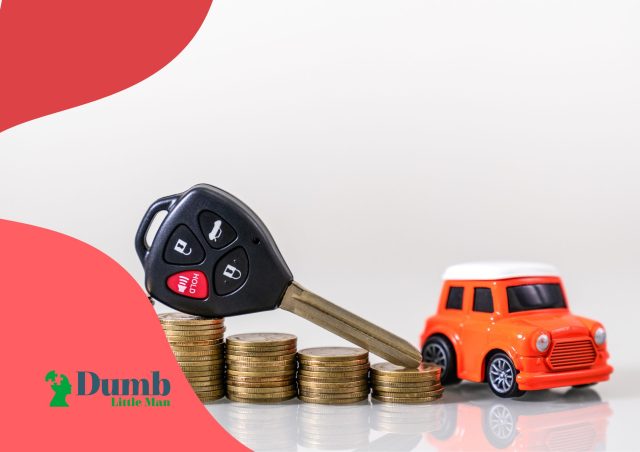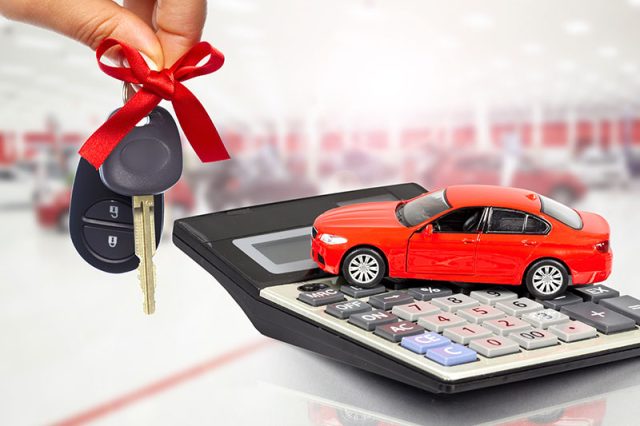The Difference Between an Auto Loan and Cash – Which One is Better?
By Dumb Little Man
January 10, 2024

Is it true that if you have enough upfront cash to pay for a car, buying it in cash rather than financing is always the best option? After all, vehicle loans are known to be the single monthly obligation preventing people from developing and expanding their wealth.
This impression is not entirely unfounded and has some merit: most vehicle loans are so-called upside-down loans, which imply the amount you owe on your car is more than its market worth. This occurs because automotive values fall over time, especially with a seven to the nine-year loan term.
Though it is typical for vehicle purchasers to use financing to buy a car, don't think you have to—there are lots of alternative methods to pay for a car that doesn’t include taking out a loan.
Things to Know When Considering the Benefits and Drawbacks of Buying a Car With Cash vs Obtaining a Car Loan

1. The financial opportunity cost
It's critical to understand that, in addition to the sticker price, the total cost of a car includes the interest you'll pay on your loan over time.
So, if your primary goal in life is to avoid debt, paying in cash might not be such a bad idea – assuming you can afford it.
However, if you pay in cash, there will be an opportunity cost in the future, which is the interest or investment returns that you could have received by holding that cash in savings or stocks.
2. Any interest rate less than 2% is worth funding
Online, you may compare the best interest rates from lenders. Automakers would sometimes subsidize loan rates to help sell automobiles.
A vehicle loan with an interest rate of less than 2% is worthwhile since it is often less than the return on investment or savings – albeit there may not be many, if any, car loans at that rate.
3. Debt service to income ratio
If you've ever applied for a vehicle, home, or personal loan, you've probably heard the term “Debt Service Ratio” from a bank's loan officer when they explain how a loan works.
In summary, the Debt Service Ratio, or DSR, is a statistic used by banks to determine if you can repay a loan. Typically, your DSR is compared to the bank's maximum permissible DSR limit. If your DSR is below the limit, you have a better chance of getting the loan. A DSR limit, on the other hand, varies depending to people and their distinct amounts of net income.
4. Do you intend to take on additional responsibilities?
In the same spirit as the previous point, consider whether you intend to sign up for more loans or obligations, such as purchasing a home or continuing your education, among other things, because this may affect your entire bottom line.
It's also crucial to remember that the value of an automobile depreciates over time, so consider if you can afford the monthly payment. We advise anyone intending to purchase a home to avoid taking out a vehicle loan at the same time, if at all feasible.
Other than cash or a vehicle loan, there are other methods to pay for an automobile
1. Make use of your savings
To be honest, saving enough money to buy a brand-new automobile altogether is impractical. The entire notion of auto loans was designed to assist us in purchasing new vehicles. If you are purchasing a secondhand automobile, it is always better to pay with cash. The extra benefit of paying in cash is that interest is avoided. Though you can find many best auto loans options.
2. Experiment with other borrowing techniques such as credit cards and personal loans.
Paying for a car using a credit card may seem ludicrous but bear with us. Though we anticipate dealerships to have credit card payment restrictions, you may try using it to pay your down payment. If it's feasible (depending on the dealership's regulations and your credit limit), you could even fund the full transaction using a credit card. However, because this is such a substantial transaction, you should first contact your card issuer and bank for clarification.
Credit card interest rates are often higher than vehicle loan interest rates, therefore this is the best or go-to option. Furthermore, having a huge amount might harm your credit because it consumes a significant percentage of your credit utilization ratio.
Personal loans are similar to vehicle loans in that they both need a monthly payment plus interest. The key distinction is that personal loans are unsecured loans, which means that while your asset will not be confiscated if you do not pay on time, your credit will suffer greatly. Aside from that, personal loans often have higher interest rates than vehicle loans.
Which is better: paying cash for a car or taking out a loan?
Many people believe that “cash is king,” and that if you can afford to pay for something in full, you should always do so. After all, with cash, you simply pay the sticker price and there are no extra fees as the year’s pass.
That is correct. If the interest rate on your savings or investments is higher than the after-tax cost of borrowing, you may miss out on expanding your wealth if you pay for the automobile in cash.
Tip: Take out a loan when interest rates are low.
Some people, understandably, may wish to avoid loans at all costs in order to prevent having debt hanging over their heads.
Advantages of Buying a car with cash
Buying a car with cash offers advantages. Because you're restricted to the money you have on hand, it might help you stay to your budget, and you won't have to pay interest on a vehicle loan. However, buying beforehand may exclude you from dealer special offers and leave you cash-strapped in an emergency.
Purchasing a car with cash is a simple process: you choose the vehicle, travel to the dealer or private seller, and hand over your money. You may then drive away with your new automobile without making any more payments (other than fuel, insurance, tax and maintenance). There is no credit check to worry about, and there is no mileage limit to be concerned about.
This one-time payment allows you to save money each month for your future automobile or other purchase instead of making monthly payments to a credit company. You will also save money in another way since you will not have to pay interest. Buying a car entirely is by far the most affordable alternative.
In contrast to a finance arrangement, where you do not become the official owner of the automobile until the conclusion of the term, you will own the car from the start, providing you with a valuable asset. If your financial condition worsens, you may easily sell the automobile to a local dealer or a national buying agency at any moment (e.g., We Buy Any Car).
Cash and traditional financing alternatives
You might choose to buy an automobile using cash. You might also look into financing options through traditional lenders or auto dealers. However, those aren't the only two options. Consider these additional options to help you make the best choice.
Leasing
Whether you buy or lease a car, you get to drive it right away. It will remain in your driveway or garage. And you can count on it to take you from point A to point B anytime you choose. However, there is a significant distinction: leasing is similar to renting. You only have the automobile for a short period — and frequently for a fixed number of kilometers each year.
On the other hand, you won't have to deal with the selling procedure. There will be no trade-in conversations with a salesman. There will be no paid advertisements or stranger test drives. When your term is over, just return the keys to the dealer.
However, this is not the only issue to consider. Another important factor is warranty coverage. Still, it can help you assess whether leasing is really a viable option in the first place. If you don't want to drive the same automobile for more than a few years, you should look into leasing arrangements.
Peer-to-peer financing
Although peer-to-peer (P2P) lending is still a type of financing, it differs in that it eliminates financial middlemen such as banks and credit unions. Some P2P lending services offer lower credit requirements. As a result, being authorized for a personal loan to pay your automobile purchase may be easier.
However, fees and interest rates should still be avoided. Compare the offerings of these platforms to those of traditional lenders. This will allow you to make the best selection possible.
Conclusion
Paying cash for a car has several advantages, including avoiding interest payments, receiving discounts, and gaining financial discipline. When considering whether or not to pay cash for a car, it is also crucial to prioritize your financial goals.
Make sure you conduct preliminary research and create a budget. This will assist you in making the best selection for your specific circumstances. However, paying cash is not always the best option; sometimes it makes more sense to finance a car and utilize the money you save to achieve other financial goals.
As with any big financial decision, it's critical to consider all of your alternatives and pick the best choice for you.
Dumb Little Man
At Dumb Little Man, we strive to provide quality content with accuracy for our readers. We bring you the most up-to-date news and our articles are fact-checked before publishing.


